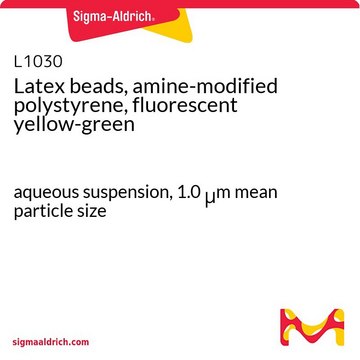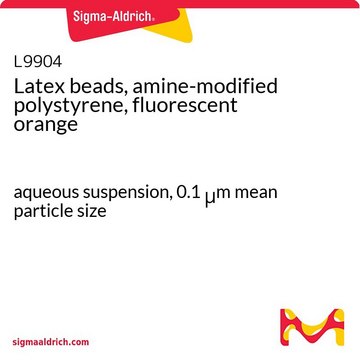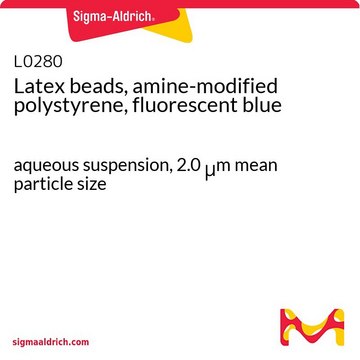L3280
Latex beads, carboxylate-modified polystyrene, fluorescent red
aqueous suspension, 0.5 μm mean particle size
Synonim(y):
Carboxylate Polystyrene Beads, Fluorescent Latex Beads
About This Item
Polecane produkty
Postać
aqueous suspension
Poziom jakości
skład
Solids, 2.5%
metody
cell based assay: suitable
średnia wielkość cząstek
0.5 μm
fluorescencja
λex ~575 nm; λem ~610 nm
Zastosowanie
cell analysis
Szukasz podobnych produktów? Odwiedź Przewodnik dotyczący porównywania produktów
Zastosowanie
- along with Milli-Q for fluid dynamic studies
- along with bile salts for confocal studies
- for particle encapsulation
Kod klasy składowania
10 - Combustible liquids
Klasa zagrożenia wodnego (WGK)
WGK 3
Temperatura zapłonu (°F)
Not applicable
Temperatura zapłonu (°C)
Not applicable
Środki ochrony indywidualnej
Eyeshields, Gloves
Certyfikaty analizy (CoA)
Poszukaj Certyfikaty analizy (CoA), wpisując numer partii/serii produktów. Numery serii i partii można znaleźć na etykiecie produktu po słowach „seria” lub „partia”.
Masz już ten produkt?
Dokumenty związane z niedawno zakupionymi produktami zostały zamieszczone w Bibliotece dokumentów.
Klienci oglądali również te produkty
Nasz zespół naukowców ma doświadczenie we wszystkich obszarach badań, w tym w naukach przyrodniczych, materiałoznawstwie, syntezie chemicznej, chromatografii, analityce i wielu innych dziedzinach.
Skontaktuj się z zespołem ds. pomocy technicznej












